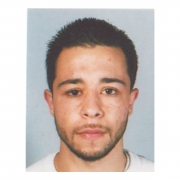Theme B: photo- and/or electro-switchable molecular systems
Photomodulation of catalytic activity (N. Bogliotti, J. Xie, S. Maisonneuve)
We prepare new azobenzene-derived arene-Ru(II) complexes, photoswitchable organocatalysts, as well as photocaged organocatalysts able to generate or modulate catalytically activity upon illumination in the aim to increase the diversity of reactions that can be photo-initiated. We also study the properties of new bimetallic species containing photoswitchable phosphorus ligands in order to control transformations involving bimetallic activation. The use of these types of catalysts can allow sequential reactions or photo-controlled multi-catalytic cascades in order to reach high added value compounds.
Photoswitchable fluorescence hysteresis (R. Métivier, S. Maisonneuve, J. Xie, K. Nakatani)
We synthesize and study the photophysical properties of systems combining fluorescent and photochromic molecules, likely to undergo photoisomerization reactions leading to a reversible fluorescence photoswitching. The fluorescence does not follow the same path under UV irradiation (fluorescence quenching) and visible irradiation (fluorescence recovery): the competitive kinetics of isomerizations which occur at different scales lead to a hysteresis effect. The design of multi-chromophoric molecular architectures with dendritic structures allows to promote high brightness and contrast, efficient energy transfer, to favor this hysteresis effect of photoswitchable fluorescence.
Amplified photoswitchable fluorescent systems (R. Métivier, G. Laurent, K. Nakatani, C. Allain)
We develop a "self-effective" super-resolution fluorescence microscopy using photoactivatable emissive nanoprobes, with threshold effect. The collective processes (multiple energy transfers) at the origin of this effect, within doped organic or silica nanoparticles, composed of photochromic and fluorescent molecular entities, are particularly important at high density of fluorophores and photochromes and allow to reach an optimal amplification of the photoactivation. Microcapsules integrating photochromes and fluorophores may also allow to consider ultra-sensitive radio-dosimeters, by combining a cascade effect and fluorescence photocommutation amplification. This work involves the synthesis of new photochromic and/or fluorescent molecules, the preparation of nano-objects, their photophysical characterization, and their study by optical microscopy (wide field, confocal) and atomic force microscopy.
Photoinduced cation transfer (I. Leray, C. Mongin)
We implement a new photoswitching strategy based on excited state cation transfer (ESCT) within supramolecular architectures, composed of photoactive and complexing units linked to a cation photo-ejector (pyridinium betaine or iridium complex derivatives). These smart molecular photoswitches allow to control the position and movement of the cation in the system, thus triggering specific and identifiable spectroscopic responses. We aim to clearly identify all the photophysical processes induced during the ESCT reaction, and then design bistable/binary ESCT photoswitches that can be used for applications such as information storage.
Molecular electrofluorochromism (F. Miomandre, V. Brasiliense, J. Audibert)
Molecular structures with electrofluorochromic properties are developed to demonstrate plasmonic or switching effects. On the one hand, we incorporate anchoring groups (thiols, thioctics) and separators long enough to optimize the interaction between the plasmonic surface or particle (gold, silver) and the electrofluorochromic unit, in supercrystal-type nanoparticle assemblies in order to enhance the effects. On the other hand, dyads and triads associating a redox switch and fluorophores interacting by electron and/or energy transfer are studied (fluorescence quenching or enhancement effects depending on the molecular structures).
New photochromic applications for optics and energy (R. Métivier, K. Nakatani, J. Xie, G. Laurent)
We develop new photochromic molecules with novel properties for applications in the fields of optics and energy, including negative photochromic compounds that fade under irradiation or cascade photochromic molecules that trigger an avalanche of molecular switches from a single chemical event. These innovative photochromic materials open the way to optical systems for neuromorphic computing, solar energy conversion and storage.
National Collaborations
- Dr J. Hannedouche (ICMMO, Univ. Paris-Saclay)
- Dr A. Marinetti, Dr A Voituriez, Dr P. Retailleau (ICSN, Univ. Paris-Saclay)
- Dr P. Yu, Dr A. Léaustic, Dr R. Guillot, Dr F. Brisset (ICMMO, Univ. Paris-Saclay)
- Pr F. Maurel (ITODYS, Univ. Paris-Cité)
- Dr E. Allard (ILV, Univ. Versailles)
- Dr H.T. Minh, Pr R. Méallet-Renault (ISMO, Univ. Paris-Saclay)
- Dr M.L. Boillot, Pr T. Mallah (ICMMO, Univ. Paris-Saclay)
- Dr M. Sliwa, Dr S. Aloïse, Dr C. Ruckebusch (LASIRE, Univ. Lille)
- Dr A. Perrier (i-CLeHS, PSL Univ.)
- Pr A. Courty (MONARIS, Sorbonne Univ.)
- Pr S. Rigaut, Dr L. Norel, Dr. J. Boixel, Dr C. Paul-Roth (ISCR, Univ. Rennes)
- Pr E. Ishow, Dr A. Laurent (CEISAM, Univ. Nantes)
- Dr F. Charra, Dr C. Fiorini (SPEC, CEA Saclay)
- Dr S. Barbay, Dr L. Calvet (C2N, Univ. Paris-Saclay)
International Collaborations
- Pr T. Fukaminato (Kumamoto Univ., Japon)
- Pr J. Abe (Aoyama Gakuin Univ., Japon)
- Pr T. Kawai (NAIST, Japon)
- Pr K. Matsuda (Kyoto Univ., Japon)
- Pr H. Miyasaka (Osaka Univ. Japon)
- Pr S. Kobatake (Osaka City Univ., Japon)
- Dr J. Jankowska (Univ. Warsaw, Pologne)
- Pr S. Silvi, Pr A. Credi (Univ. Bologna, Italie)
Research Contracts
GDR “Photo-Electro-Stimulation” (2018-2022)
IRP France-Japon “NanoSynergetics” (2018-2026)
ANR “SOLPHOTOCAT” (PRC, 2022-2026)
ANR “PHOTOMIC” (PRC, 2022-2026)
ANR “SWIST” (PRC, 2018-2022)
ANR “SWITCH-PHOS” (PRC, 2017-2021)
PEPS CNRS Energie “PULSE” (2020)
LabEx CHARM3AT “Photo-caged nucleophiles for multicatalytic reactions” (2020-2021)
LabEx NanoSaclay “CANAPO” (2021-2022)
CENTURION DGA-SAFRAN “CALAMAR” (2021-2024)
Theme B managers


Members












